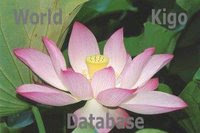:::::::::::::::::::::::::::::::::::::::::::::::::::::::::::::::::::::::::::::::::::::::::::::::::::::
Olympic Games and Mascots
Olympic Games and Haiku
:::::::::::::::::::::::::::::::::::::::::::::::::::::::::::::::::::::::::::::::::::::::::::::::::::::
Peking Olympic Mascots FUWA - 2008
They take their form from the classic Chinese tumbler dolls "oki-agari", the same as the ancestor of our Daruma san.

The Fuwa (Chinese: 福娃; pinyin: Fúwá; literally "good-luck dolls") was designed by Han Meilin. They were originally named "The Friendlies", but this name was dropped as Chinese officials were worried that it would be misunderstood as "friendless" or "friend lies."
The Fuwa consist of five members that incorporate fish, giant panda, fire, Tibetan antelope, and swallow designs.
They roughly correspond with the five elements of Chinese philosophy:
water, metal, fire, wood, and earth.
The Fuwa each have as their primary color one of the colors of the five Olympic Rings that stand for the five continents. The five Fuwa are named Beibei, Jingjing, Huanhuan, Yingying, and Nini. When the first syllable of each of the five names are said together, the result is the phrase 北京欢迎你 (Běijīng huānyíng nĭ) which means "Beijing welcomes you".
© Summer Olympics 2008 Peking

Google Japan August 8, 2008

:::::::::::::::::::::::::::::::::::::::::::::::::::::::::::::::::::::::::::::::::::::::::::::::::::
Tumbler Dolls : okiagari koboshi
起き上がり小法師
The origin of papermachee dolls (hariko 張子) comes from China. During the Tang period (616 - 906) Chinese culture reached a pinacle. During that time there was the custom of using a wooden doll with a pointed base, which was like a spinning top. When the doll fell, it pointed to a person who had then to drink the next cup of ricewine or do a short performance. (Remember, the cups were really quite tiny.) Times passed and we reach the Meiji Period of Japan (1868 - 1912). The Chinese Drinking Companion had changed to a Japanese papermachee doll and was now called "Old man who never falls down".
This old man seemed to get healthier with the years and was the symbol of long life. Japanese travellers to China brought the Chinese dolls back as souvenirs, since they were light and easy to carry. Falling down and tumbling up again, this was so much fun that it soon turned into a toy for little children - the Tumbler Doll was born. It seemed to fit the parent's wish for children to grow up healthy and was a hit on the market. Going through many changes during time, the old man turned into Daruma as we know the doll today.
Daruma and Okiagari Tumbler Dolls

:::::::::::::::::::::::::::::::::::::::::::::::::::::::::::::::::::::::::::::::::::::::::::::::::::::
Olympic Games July 2012, London
オリンピック応援だるま
To cheer for the games - 応援だるまは Oen Daruma
A blue one to cheer the men's team.
A white one to cheer the women's team.

source : www.takasakiweb.jp
From Imai Daruma Store in Toyooka 上豊岡町の今井だるま店

.................................................................................

source : tyounomauoka/so.sebundaruma
:::::::::::::::::::::::::::::::::::::::::::::::::::::::::::::::::::::::::::::::::::::::::::::::::::::
Google Summer Olympics 2012
from google japan
https://www.google.co.jp/

July 27

July 28

July 29

July 30

July 31

August 01

August 02

August 03

August 04

August 05

August 06

August 07

August 08

August 09

August 10

August 11

August 12 - great finale
Olympic finale -
how many eyes are glued
to the TV now?
Monday 13, 2012 at 8:00 in Japan
オリンピックだるま 2012
. . . CLICK here for Photos !
:::::::::::::::::::::::::::::::::::::::::::::::::::::::::::::::::::::::::::::::::::::::::::::::::::::::
2020 - Tokyo Olympics

The friends of Daruma are getting ready!
Thank you, Nakamura san.
オリンピックだるま 2020
五輪にちなみ五色のだるま生産

. . . CLICK here for Photos !
gorin Daruma 五輪だるま 2020
made with flags of the world and stamps of the world


.......................................................................
Takasaki Daruma in 2021 - games are delayed
:::::::::::::::::::::::::::::::::::::::::::::::::::::::::::::::::::::::::::::::::::::::::::::::::::::::::::::::::::::::::::::::::::
Olympic Games and Haiku
. GOOGLE logo - INFO .
[ . BACK to DARUMA MUSEUM TOP . ]
[ . BACK to WORLDKIGO . TOP . ]
- #gorindaruma #olympics2020 #daruma2020 -
:::::::::::::::::::::::::::::::::::::::::::::::::::::::::::::::::::::::::::::::::::::::::::::::::::::





































